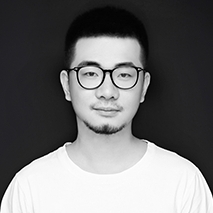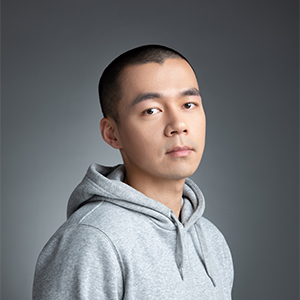-
 杨李
IBM
资深用户体验设计师
杨李
IBM
资深用户体验设计师
IBM资深用户体验设计师, 从事用户体验设计8年经验中,在To-B端产品领域的用户研究、用户体验和用户界面设计方面拥有丰富的经验。
使用Enterprise Design Thinking在HR、教育、Cloud、金融等行业,帮助企业级的客户发现问题,解决问题,让企业由内而外实现各个流程的体验提升。从而帮助各个企业由外而内完成数字化、智能化、人文化转型。
平台-生态系统思维设计助力企业数字化转型
市场平台范式正在逐渐普及,诸如在电信,计算机,物流,移动性,金融服务,航空航天等领域,行业整合对于提高效率和普遍性起着至关重要的作用,巨大的机遇正在浮现。在这个平台领域中,我们不仅仅是为客户的问题提供解决方案,而是进一步打造一个可持续运作的生态系统。在这样一个生态系统中,可以通过找到合适的杠杆点,逐步帮助目标企业用户从内至外地实现多方组织架构的转型,企业员工行为交互及工作方式的转型,最终实现整个企业的数字化转型过程。
使用平台生态系统思维为能够组织的发展提供了两个重要方面的新可能性:业务模型创新和组织的发展。成功的组织往往都是那些,能够洞悉那些影响他们的业务因素的同时,又拥有系统性治理模型的组织,这两个方面是确保整个系统和整个行业转型与发展的关键。
然而,这个设计过程是如何运作的,们要如何在这样的设计过程中进行合作,以及不同的组织又要如何在更高层次的系统思维下进行合作的呢?适应这种新的,固有的非竞争格局的“战略”概念是什么?
此次工作坊将结合IBM HR talent transformation的案例,说明如何应用生态系统思维去深度挖掘核心用户以及价值创造者之间的交互关系及核心诉求。通过Stakeholder Map (利益相关者地图) 去发现潜在的机遇,然后透过Enterprise Design Thinking(企业设计思维)的相关方法论,包括Assumption and question(假设与问题)去定义愿景。再使用Lean Ecosystem Experience Canvas(精益生态体验画布)和Entry Point Factor(触点及关键影响因素)来进行生态系统中各体验流程的完善。最后通过定义 Minimum Viable Ecosystem (最小可行性生态系统)并做验证,赋予生态系统自我组织能力,去完成一个可持续性生态系统的构建,助力企业的数字化转型。
工作坊主要内容:
1、 工作坊背景介绍
1.1 平台策略与产品策略的区别
1.1.1 产品策略:一个点,为解决企业某个单一的需求而生产品
1.1.2 平台策略:一个面,打造一个可持续运作更新迭代的生态系统
1.2 生态系统思维的平台构建的意义
2 、结合案例讲述构建生态系统平台的方法:
2.1 发现 — 识别潜在机遇
设计工具:Stakeholder Map (利益相关者地图)
2.1.1 确认利益相关者
2.1.2 利益相关者分组与关联
2.1.3 利益相关者挖掘与维护
2.2 愿景— 挖掘诉求与价值,定义系统目标
设计工具:Enterprise Design Thinking(企业设计思维)
2.2.1 Assumption and question (假设与问题)
· 收集假设:探索未知
· 定义高风险和模糊选项:评估风险与优先级
· 输出计划:用户研究方法
2.2.2 Hills (目标山丘):定义方向
2.2.3 Playbacks (回放): 将利益相关者带入安全的空间中,以讲述故事并交换反馈
2.3 完善体验的闭环 — 理解平台创意如何与提出的假设产生“共鸣”
设计工具:Lean Ecosystem Experience Canvas(精益生态体验画布)、Entry Point Factor (触点及关键影响因素)
2.3.1 Lean Ecosystem Experience Canvas (精益生态体验画布)
· Customer Segments (目标客户区隔): 客户群体分类
· Problem (问题): 最需要解决的问题
· Unique Value Proposition (独特价值主张): 产品的特点和价值点
· Solution (解决方案): 需要解决的三个功能性问题
· Channels (渠道): 寻找客户的渠道
2.3.2 Entry Point Factor (触点及关键影响因素)
· 识别触点
· 识别影响触点的关键指标 KPI
2.4 验证 — 验证最高风险的假设
2.4.1 Minimum Viable Ecosystem (最小可行性生态系统)
与MVP(最小可行性产品)类比,通过对最小可行性生态系统的定义和验证。
2.4.2 Feedback in Enterprise Design Thinking Loop (企业设计思维循环的反思)
· Observe (观察):观察消费者的需求,根据他们的想法验证他们的期望
· Reflect (反映):反思和巩固所获信息形成相应的观点制定可靠的计划
· Make (操作):将想象变成现实
2.5 落地 — 设计落地
2.5.1 IBM Design System:跨团队协作打造一致的体验
2.5.2 研究学习计划:持续创新与创造价值
3 、实践互动
3.1 虚拟案例练习
3.2 针对给出的案例分组给出平台构建方案
3.2 案例复盘和给出反馈
1、工作坊介绍:平台-生态系统思维背景介绍
2、案例介绍:IBM数字化人才转型
3、理念解析:利益相关者地图,企业设计思考工具箱--假设和问题,精益生态系统经验画布和切入点因素,最小可行的生态系统,反馈信息
4、实践互动:分组进行虚拟案例练习
5、Q&A环节
6、工作坊总结
1、用户体验设计师
2、To-B 产品经理
3、交互设计师
1、收获To-B企业平台产品的设计系统思维方法论
2、了解传统企业级产品设计与可持续平台打造思维的差异点
3、进行深度挖掘在不同客户场景下,洞察用户行为,以及识别价值企业价值点的思考体系
4、结合案例学习构建企业级平台产品的设计思考全流程助力企业数字化转型
-
 案例Showcase
案例Showcase
-
 认知型企业画布
认知型企业画布
-
 企业设计思维的循环
企业设计思维的循环
-
 IBM企业设计思维
IBM企业设计思维
-
 利益相关者地图
利益相关者地图
-
 可持续生命周期产品设计流程
可持续生命周期产品设计流程
-
 产品增长
产品增长
-
 双赢系统
双赢系统
-
 迭代周期
迭代周期
-
 进入点识别
进入点识别








